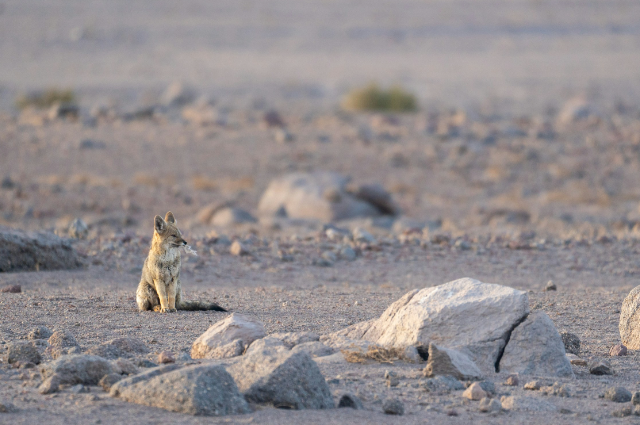
Photo by Sebastián Silva Solar on Unsplash
Deserts have always been part of Earth’s natural geography. They are unique biomes, home to specialized plants and animals that thrive under harsh conditions. In recent decades, however, the term “desertification” has come to describe something more alarming: climate change, deforestation, overgrazing, and unsustainable farming practices that turn fertile land into deserts. This human-driven process goes far beyond soil erosion and crop losses. At its core, desertification causes dramatic changes in the survival of local wildlife, disrupts entire ecosystems, and sends shockwaves across regions.
Wildlife often responds to habitat changes through adaptation, migration, or decline. For millions of years, desert species have evolved to withstand extreme heat, scarce water, and food shortages. Animals such as camels, fennec foxes, desert tortoises, and jerboas embody this resilience. But when formerly fertile areas lose vegetation and water resources, turning barren, animals face a severe survival crisis. Many species cannot adapt quickly enough to the sudden changes. Amphibians, small mammals, birds, and pollinators—dependent on stable vegetation and water—are among the first to decline.
At the center of this change is the breakdown of plant communities. Vegetation provides not only food but also shade, shelter, and soil stability. When over-farming, deforestation, or prolonged drought strips the land of greenery, herbivores lose their grazing grounds. In turn, carnivores lose their prey, creating a chain reaction of hunger. For example, grasslands that dry out due to rising temperatures can no longer sustain antelope, zebras, or wild horses. As herbivore populations fall, predators such as lions and wild dogs face reduced survival chances. Even scavengers like vultures and eagles decline when the food chain collapses. Desertification does not just wipe out individual species—it destabilizes the entire ecosystem.
Water shortages are perhaps the most devastating consequence for wildlife. As deserts spread, rivers dry up, wetlands disappear, and shallow lakes shrink into the ground. Migratory birds, which rely on these water bodies during long journeys, often arrive to find nothing left. Amphibians, whose lifecycles depend on humid environments, vanish almost immediately. Fish stocks dwindle as lakes dry up, dragging down entire food chains. Desertification essentially drains ecosystems of water, forcing animals into a life-or-death struggle.
Extreme temperature shifts also worsen the situation. Deserts heat up rapidly during the day and cool sharply at night. For animals accustomed to moderate climates, such swings are unbearable. Some reptiles and rodents adapt for a while, but birds and mammals with high metabolic needs struggle to survive. Even species that endure for short periods often weaken, become less fertile, or fall prey to disease—making long-term survival nearly impossible.
The loss of vegetation further accelerates soil erosion, stripping away nutrients and leaving the land barren. With fewer plants, insects vanish, taking vital pollination services with them. Pollinators such as bees, bats, and birds are crucial for biodiversity, and their disappearance prevents new plants from regenerating. Desertification thus creates a vicious cycle: fewer plants mean fewer insects, fewer insects mean fewer pollinators, and without pollinators, plants cannot return. The end result is a lifeless landscape.
Migration adds another layer of conflict. Many animals abandon their native habitats in search of food and water, often clashing with other wildlife or human settlements. For example, elephants in African savannas sometimes enter villages when their traditional ranges dry up, leading to conflict with people defending crops and property. Smaller wildlife, unable to compete with stronger species, suffers even more. Human-made barriers such as roads and fences further block safe migration, trapping wildlife between declining habitats and human activity.
Desertification also disrupts predator-prey balance. Predators may disappear if their prey no longer exists, or conversely, prey may collapse under increased hunting pressure when forced into smaller areas. Diseases also spread faster in stressed ecosystems where weakened animals and low genetic diversity make populations more vulnerable. Perhaps the most troubling aspect of desertification is its slow, creeping nature. Unlike a storm or wildfire, it expands gradually, often unnoticed until it has reached devastating levels. By the time conservation alarms are raised, ecosystems may already be beyond repair. Entire species tied to specific habitats vanish permanently, altering the balance of life. For example, the extinction of a single pollinating insect can affect entire plant species, which in turn affects animals dependent on those plants. The “butterfly effect” of desertification is not sudden, but its long-term impact is deeply destructive.
. . .
References:
